By: Chelsea Harnish, VAEEC Executive Director
The 2016 Virginia General Assembly session has come to a close. You can see our previous updates here and here.
The good news is that SB 395 and HB 1053 have been signed by the Governor. As a reminder, here is the summary we shared previously: Removes the lost revenue recovery provision for utility EE programs and adds in a performance incentive based on levelized costs of energy savings (1% of costs returned if energy savings below 6 cents per kilowatt hour; 2% below 5 cents per kilowatt hour; 3% below 4 cents per kilowatt hour; 4% below 3 cents per kilowatt hour) Download the 1053/395 fact sheet.
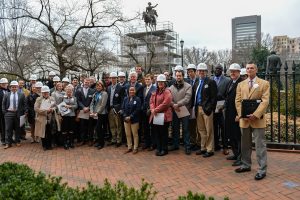
Thanks to everyone who came out for Clean Energy Day 2016
As a result of this new law, by the end of 2016 the State Corporation Commission (SCC) will issue a report on EM+V protocols. VAEEC plans to submit comments to the SCC about this important issue and will keep you posted as we learn more about the process.
Now on to the bad news… in a last minute upset, the Senate Commerce and Labor committee killed Del. Sullivan’s HB 1174, which would have required DMME to issue an annual progress report on where the Commonwealth stands in meeting the 10% by 2020 voluntary goal. We are disappointed in this turn of events, but we hope to work with the patron next year to re-introduce this legislation.
We hope that you were able to join us last week at Clean Energy Lobby Day. It was great to see so many familiar faces in the building talking with their legislators about the importance of energy efficiency!
 This week brings us to the halfway mark- or “crossover”- for the 2016 General Assembly session. All of the energy efficiency bills we are tracking have been heard in their respective committees. Below is a rundown on their statuses. For a summary of each of these bills, check out our legislative tracker.
This week brings us to the halfway mark- or “crossover”- for the 2016 General Assembly session. All of the energy efficiency bills we are tracking have been heard in their respective committees. Below is a rundown on their statuses. For a summary of each of these bills, check out our legislative tracker.
- HB 352 (Del. Ware). At the request of the patron, this bill was carried over until next session.
- HB 1053 (Del. Kilgore). After several deliberations with stakeholders and a robust discussion during the committee hearing, this bill looks very different than the original. The bill directs the SCC to study the potential for establishing uniform EM+V protocols for reporting the impacts of utility energy efficiency programs. This bill narrowly made it out of committee with an 11-to-9 vote.
- HB 1174 (Del. Sullivan). This bill was a late addition to our legislative tracker. After working with the patron and some of our members on slight language modifications, we were able to give this bill our full support. Using a common phrase heard around the General Assembly building, after finding “peace in the valley”, this bill passed out of committee.
- SB 395 (Sen. Alexander). This bill came up in committee on Monday and is the companion bill to HB 1053 (they are the same bill in separate chambers). This bill passed out of committee as well.
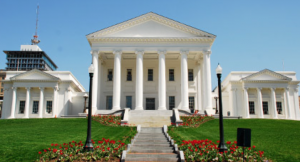 All of the bills above that made it out of committee have also made it out of their respective chamber. Today marks “crossover”, which means that each chamber- house and senate- can only take up bills from the opposite chamber. In essence, we start fresh tracking our bills and testifying on them before their respective committees.
All of the bills above that made it out of committee have also made it out of their respective chamber. Today marks “crossover”, which means that each chamber- house and senate- can only take up bills from the opposite chamber. In essence, we start fresh tracking our bills and testifying on them before their respective committees.
Stay tuned for more updates as the session continues through March 12.
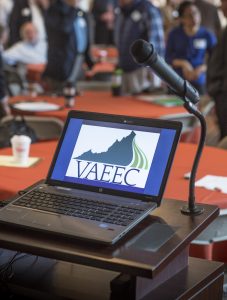 This is your chance to shape the future of the VAEEC. We’re taking stock of our membership structure, the benefits we provide and the ways we communicate — and we need to hear from you.
This is your chance to shape the future of the VAEEC. We’re taking stock of our membership structure, the benefits we provide and the ways we communicate — and we need to hear from you.
Interested in regional happy hours or webinars?
What information and resources that we share provide the most value?
Would you pay to attend our meetings?
Let us know!
Please pencil in some time to answer our short 10-question survey by Friday, March 4.
VAEEC members take this survey.
VAEEC stakeholders take this survey.
Not sure if you’re a member? Check our list.
Governor McAuliffe’s stakeholder group on the Clean Power Plan (CPP) met for the third time on Friday, February 12, and began getting into the details of the choices before us. The McAuliffe Administration and Virginia Dept. of Environmental Quality (DEQ) are moving forward with a Virginia implementation plan despite the recent Supreme Court stay on the EPA regulation targeting greenhouse gases.
Energy efficiency should have a strong role in the Virginia CPP implementation plan. The state has high per-capita electricity use, due to decades of low prices and limited programs for efficiency. The Commonwealth has enormous potential for cost-effective energy efficiency savings. How well the state captures this potential for economic gain will depend in large part on the implementation plan Virginia designs.
Stay tuned for more.
###
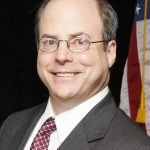 John Morrill is the energy manager for Arlington County. He is on the Governance Board of VAEEC, and he was appointed to the CPP Stakeholder Group on behalf of the Virginia Association of Counties (VACO). John welcomes input from readers: jmorrill@arlingtonva.us
John Morrill is the energy manager for Arlington County. He is on the Governance Board of VAEEC, and he was appointed to the CPP Stakeholder Group on behalf of the Virginia Association of Counties (VACO). John welcomes input from readers: jmorrill@arlingtonva.us
February 2016
Featured Member of the Month: Community Housing Partners (CHP) and their work with Weatherizers Without Borders (WWB)
Business Gold Member
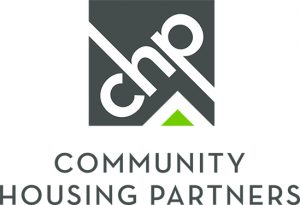 Christiansburg-based Community Housing Partners, or CHP (Business Gold VAEEC member), does incredible work creating and sustaining “communities that promote vitality in neighborhoods, foster wealth-building for individuals, and contribute to a better environment for future generations” through sustainable development, architectural design, construction, homeownership,, housing management, resident services, energy training and research, emergency home repair, and weatherization.
Christiansburg-based Community Housing Partners, or CHP (Business Gold VAEEC member), does incredible work creating and sustaining “communities that promote vitality in neighborhoods, foster wealth-building for individuals, and contribute to a better environment for future generations” through sustainable development, architectural design, construction, homeownership,, housing management, resident services, energy training and research, emergency home repair, and weatherization.
But what’s equally impressive is their work not just outside the Commonwealth but outside the United States. As a founding partner of Weatherizers Without Borders (WWB), CHP works with various global entities to fight energy inefficiency and energy poverty in order to improve the health, safety, comfort, and economy of families across the globe in Central and South American countries. They help introduce programs like the U.S. Department of Energy’s Weatherization Assistance Program as public policies in these regions, and CHP Energy Solutions Research and Training has trained WWB volunteers in both Virginia and Argentina.
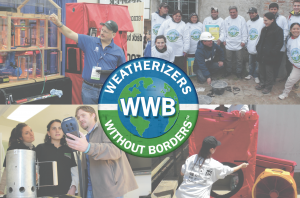 CHP’s Chase Counts is one of several subject experts from the Training Center who have provided training and technical assistance in Buenos Aires, Argentina. “During my three-week stay, we were able to provide hands-on field training to 15 installers, an additional 8 student-volunteers that would continue developing the trainings, and we held a two week building science intensive course at the Instituto Tecnologico Buenos Aires for 25 architects, engineers, utility professionals, professors, and interested students,” explains Chase, “There is a strong interest and demand for weatherization work that extends beyond saving energy to also include improving quality of life and making households healthier.”
CHP’s Chase Counts is one of several subject experts from the Training Center who have provided training and technical assistance in Buenos Aires, Argentina. “During my three-week stay, we were able to provide hands-on field training to 15 installers, an additional 8 student-volunteers that would continue developing the trainings, and we held a two week building science intensive course at the Instituto Tecnologico Buenos Aires for 25 architects, engineers, utility professionals, professors, and interested students,” explains Chase, “There is a strong interest and demand for weatherization work that extends beyond saving energy to also include improving quality of life and making households healthier.”
WWB is preparing to host their third International Summit on Weatherization at the Virginia Tech Research Center in Arlington in early March. The Summit will be complemented by speakers and presentations on weatherization both in the US and Latin America. The presentations will be followed by workshops discussing how to building international sustainable housing polices and the role of universities in this challenge.
We wrote about WWB back in January 2014 when things were just getting started.
You can learn more about WWB’s work in Uruguay and the overall global reach of WWB.
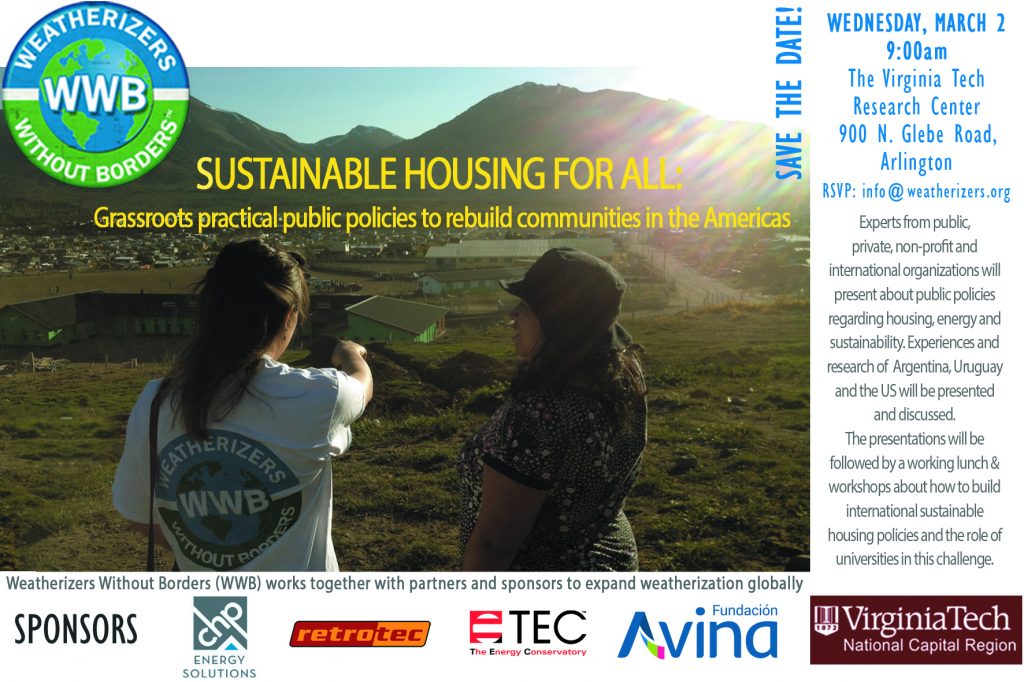
January 20, 2016
“Implementing the U.S. Environmental Protection Agency’s Clean Power Plan would have minimal impact on electricity costs in Virginia, and could even provide savings for ratepayers under some scenarios, compared with projected energy costs in 2030.” Those are among the findings of a white paper released today by the Advanced Energy Economy Institute.
The basis of the paper is an open-access analytic tool called the State Tool for Electricity Emissions Reduction (STEER) that allows state officials and other stakeholders to consider CPP compliance options and their economic impacts.The paper presents the results of two specific scenarios that are representative of multiple runs through STEER.
Echoing previous regional and national studies, this report emphasizes the important role energy efficiency can play in meeting CPP carbon reduction targets:
“Over several runs of the STEER model, energy efficiency and renewable energy are consistently the lowest cost mitigation options for the state. With significant energy efficiency potential, the state has an untapped resource in utility energy efficiency and network efficiency improvements.”
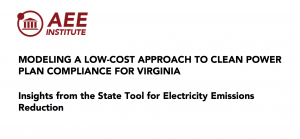 Most likely to turn heads is the report’s finding that with energy efficiency and renewables, these targets can be with minimal impact on electricity costs in Virginia compared with business as usual:
Most likely to turn heads is the report’s finding that with energy efficiency and renewables, these targets can be with minimal impact on electricity costs in Virginia compared with business as usual:
“In Scenario A there is a minor rate increase seen, less than a half of a penny per kilowatt hour, compared with a business-as-usual projection. In Scenario B, the scenario using the SCC’s efficiency potential study, we see a decrease in electric rates compared with business-as-usual. In neither scenario do we see significant costs imposed on Virginia ratepayers as a result of Clean Power Plan compliance. The result is likely due to the substantial contribution to compliance made by low-cost resources such as energy efficiency and renewable energy. The scenarios shown here demonstrate that Virginia can achieve its required carbon reduction targets without imposing significant costs on ratepayers compared with business as usual.”
As the Commonwealth moves forward with CPP compliance plans, reports of this nature provide state leaders with another layer of evidence that the targets are achievable when we harness energy efficiency and renewables.
Side note: The American Council for an Energy Efficient Economy (ACEEE) just released the State Utility Pollution Reduction Calculator Version 2 (SUPR2), a tool that allows anyone to explore the cost and pollution reduction potential of different strategies.
Find out more and get access to ACEEE’s SUPR2 here.
Read the full Advanced Energy Economy Institute white paper here. The press release is also available here.
STEER for VIRGINIA is available for download as an Excel spreadsheet, with user manual, at http://info.aee.net/steer-virginia.
Guest Blogger: Chase Counts, CHP Energy Solutions (VAEEC Member – Business Gold)
January 20, 2016

Energy efficiency programs and policies in Virginia have historically favored detached, single-family homes over multifamily housing. For a brief period around 2009, weatherization funds were used on affordable multifamily housing following the influx of federal stimulus money under ARRA; but currently, Virginia’s weatherization program only serves single family housing and only around two-percent of utility funded residential efficiency programs in Virginia go to multifamily housing. Beyond that, few resources have been available to the 385,000 Virginia households residing in affordable multifamily buildings representing about twelve-percent of the commonwealth’s housing stock.
Affirming this imbalance, the national Energy Efficiency For All project identified Virginia as one of 12 states that could cost-effectively increase energy efficiency in the affordable multifamily sector. Leveraging the established reputation and network of Virginia Housing Alliance to lead the charge, a cross-sector group of energy efficiency advocates, weatherization providers, affordable housing providers, and environmental organizations gathered to form the Virginia Multifamily Energy Efficiency Coalition (MFEEC).

The mission of the Coalition is “advancing policies and programs that provide comprehensive energy efficiency services to Virginia’s multifamily affordable housing stock.” The group has set a goal of “25 / 25 / 2025,” which means the coalition will support policies and programs resulting in an average energy savings of 25-percent or greater in 25-percent of the affordable multifamily housing stock in Virginia by 2025.
The Coalition has identified the following opportunity areas to advance towards their goal:
- Weatherization Assistance Program (WAP)
- Utility driven energy efficiency programs
- Legislature
- State Administration
- Financing Mechanisms
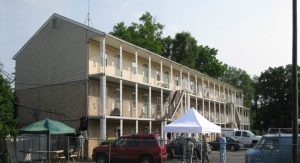
Credit: CHP Energy Solutions Research and Training
Since the inaugural meeting in October 2015, Coalition members have established a presence in each opportunity area. Most recently, weatherization service providers participating as contractors for Dominion Virginia Power’s (DVP) prescriptive energy efficiency programs requested the Coalition represent their interests in a negotiation with DVP regarding extending funds to assist with addressing health and safety issues. The Coalition garnered consensus with the providers and submitted a proposal under consideration by DVP currently. A resolution is anticipated early in 2016 that will help keep Virginia households participating in the DVP programs safe and with peace of mind.
The Coalition has also established a work plan to ensure productive discussions turn into meaningful actions with tangible results. The first initiative is establishing a scorecard to track the progress of reaching the goal of reducing the energy burden of nearly 100,000 households within the next 10 years. The second initiative is to host an event in 2016 that will bring together the energy and housing sectors in Virginia and begin to amplify the foundational efforts of the Coalition.
The goals put forward by the MFEEC are ambitious but attainable. The members are driven, passionate, and collectively understand the various policy, regulatory, and technical obstacles and complications that come with a mission of safely and cost-effectively improving energy efficiency of affordable multifamily housing by 25-percent.
If you are interested in becoming a member or for additional information about MFEEC, please visit the website at www.vamfeec.org or contact Zack Miller at zmiller@vahousingalliance.org.
 Guest Blogger: Abby Johnson, Abacus Property Solutions (VAEEC Member – Individual)
Guest Blogger: Abby Johnson, Abacus Property Solutions (VAEEC Member – Individual)
January 19, 2016
This year, Virginia Community Capital received a grant from the Oak Hill Fund to explore implementation of PACE financing in Virginia. As part of this grant, VCC held an initial stakeholder meeting on July 14, 2015 where attendees heard about the new PACE law that went into effect on July 1, 2015 as well as from guest speakers from other states. On December 8th, Virginia Community Capital (“VCC”) held the final Virginia PACE Financing stakeholder meeting at the Trane facility in Ashland. At this meeting, the Department of Mines, Minerals and Energy (DMME) gave an overview of the new PACE financial underwriting guidelines that went to effect December 1, 2015 and Rich Dooley, of Arlington County gave an update on Arlington’s plans to issue an RFP for a program administrator. Then I joined Neal Barber of Community Futures to present the findings from our grant research. Afterwards, attendees broke out into groups to discuss these recommendations and offer their insights.
As a seasoned executive within state and local governments for 40 years, Neal was selected to interview local elected officials and staff from across Virginia. During the fall, Neal met or spoke with 35 jurisdictions to gauge the level of knowledge and interest in participating in a PACE financing program. For the most part, his research revealed that few jurisdictions were currently aware of PACE with the exception of those with dedicated sustainability officials. Although there was definitely interest in the concept of PACE as an economic development tool, top conclusions from these interviews revealed that there is a:
- Need for significant education to different parts of a locality’s staff to explain how PACE would impact them
- Benefit to engaging a local champion to push PACE as a priority item within a locality
- Interest in a centralized “plug and play” program
- Preference for seeing how PACE is adopted in other jurisdictions before taking the proverbial plunge.
Given my deep knowledge of PACE programs around the country and extensive work in Virginia, I was asked to analyze national best practices and develop an initial set of recommendations for our state. Some highlights include:
- A minimum annual project volume of $10-20 million is needed to sustain a PACE program, assuming upfront ongoing administration fees are the primary source of funding for the administrator.
- Most successful programs have or had internal funding or financing structures such as the Green Bank in Connecticut.
- Successful programs tend to be located in areas with high utility rates, robust incentive structures, and/or higher energy usage such as California and Connecticut.
- The cost to develop (set-up and implementation) a PACE program is estimated to be $500K to $1 million for a full service program administrator.
- Although smaller projects (under $300k) represent a major source of deal flow, the costs to both the program administrator and the building owner are often prohibitively high and must be streamlined to be a viable product line.
- Education is key and must be a major budget item both to convince localities of the program’s value and to train key channel partners.
Although much more research is required to develop a detailed implementation plan, some initial recommendations include:
- Develop a P3 platform through alignment with a new or existing statewide entity with a standardized set of documents and procedures such as: model ordinance, underwriting criteria, and vetted contractors and capital providers. This state-level entity would partner with regional and local institutions to leverage existing relationships and marketing infrastructure.
- Prioritize two or three localities with the maximum potential for the first year.
- Identify creative ways (such as job creation/training grants) to provide the program administrator with funding that generates a healthy pipeline quickly.
Arlington County is forging ahead with developing a PACE program. This past week, Arlington held the first of several planned discussions on the benefits of PACE to local stakeholders – this one geared toward commercial real estate lenders. I, along with Arlington’s Rich Dooley, fielded many thoughtful questions during this lively discussion, demonstrating first hand the absolute importance of education when introducing a new product to the market.
Related Post: PACE is finally here in Virginia (June 2015)
January 2016
Dominion Virginia Power
Gold Level Member
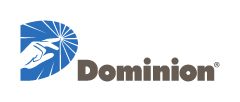
Dominion Virginia Power is a subsidiary of Dominion (NYSE: D), one of the nation’s largest producers and transporters of energy with operations in 14 states. Dominion Virginia Power offers 6 non-residential, and 7 residential programs that empower customers to manage their energy consumption, resulting in lower bills throughout the year. The company recently expanded its EnergyShare program to provide financial assistance, weatherization services and educational outreach to more qualifying customers, including people living with disabilities and military veterans facing financial hardships. As a regulated utility, Dominion regularly reviews and proposes new programs for approval to the State Corporation Commission (SCC). Currently under consideration by the SCC are a residential programmable thermostat program and a small business program.
To view the current list of programs and incentives for Dominion customers visit the Energy Conservation home page.
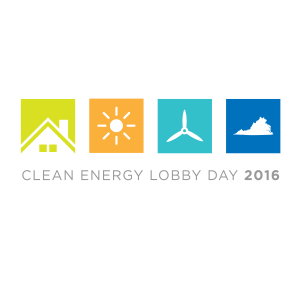 The VAEEC is teaming up with the Maryland, DC, Virginia Solar Energy Industries Association (MDV-SEIA) to host Clean Energy Lobby Day (CELD) 2016 on February 9.
The VAEEC is teaming up with the Maryland, DC, Virginia Solar Energy Industries Association (MDV-SEIA) to host Clean Energy Lobby Day (CELD) 2016 on February 9.
Our focus will be on bringing together the advanced energy businesses of Virginia with key legislators to advocate for clean technology bills in this upcoming legislative session.
Last year, more than 100 business representatives from Virginia’s solar, wind and energy efficiency industries achieved 60+ meetings with legislative offices.
You can download fact sheets on the bills VAEEC is supporting
here.



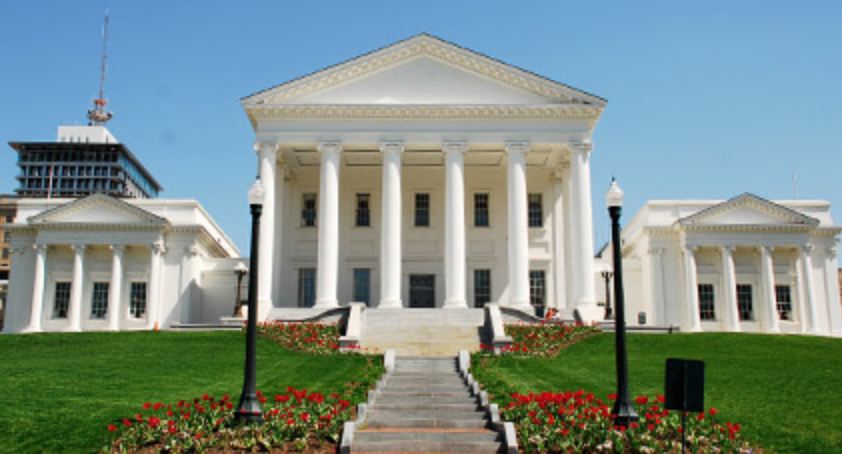


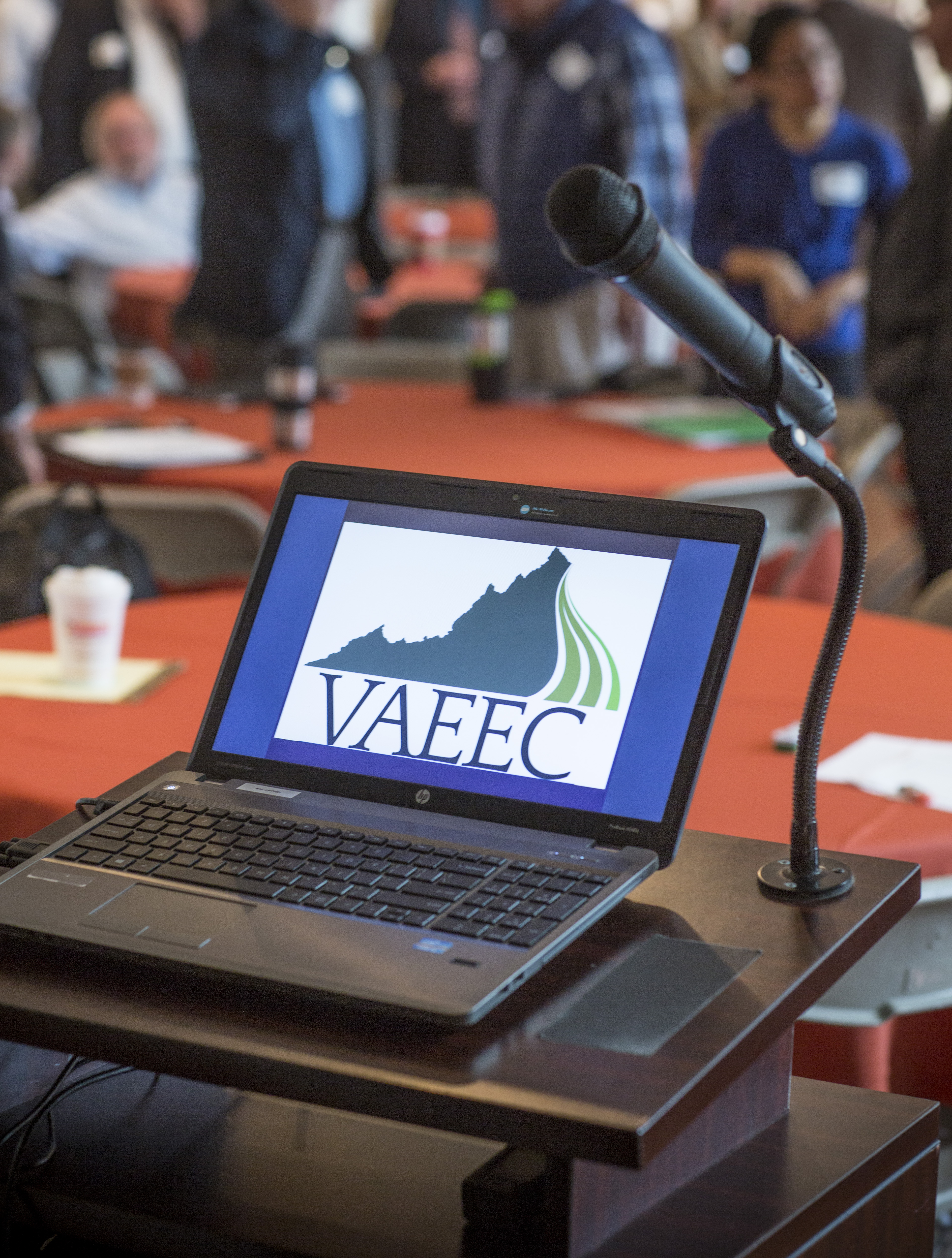











 Guest Blogger: Abby Johnson, Abacus Property Solutions (VAEEC Member – Individual)
Guest Blogger: Abby Johnson, Abacus Property Solutions (VAEEC Member – Individual)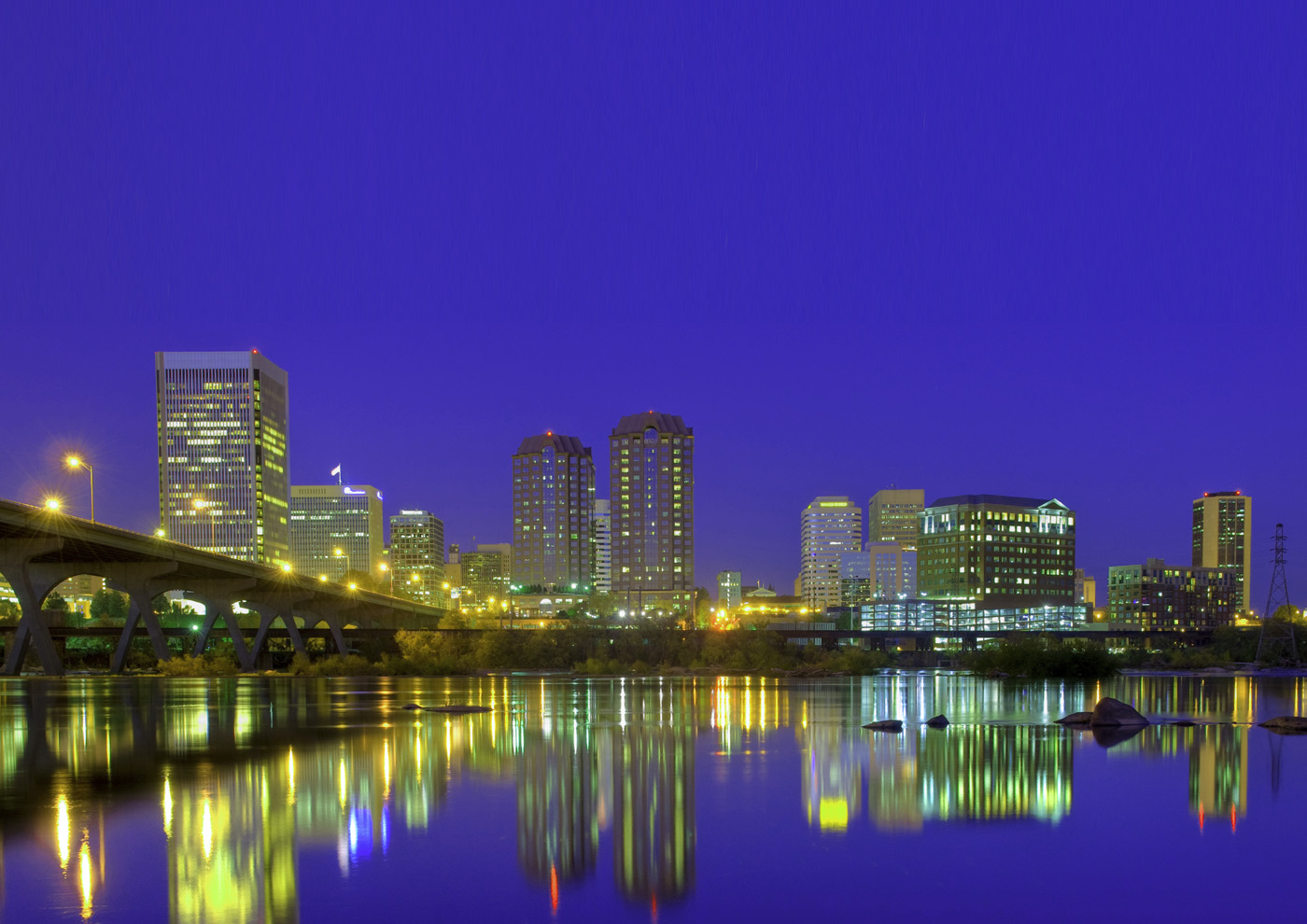

 The VAEEC is teaming up with the Maryland, DC, Virginia Solar Energy Industries Association (MDV-SEIA) to host Clean Energy Lobby Day (CELD) 2016 on February 9.
The VAEEC is teaming up with the Maryland, DC, Virginia Solar Energy Industries Association (MDV-SEIA) to host Clean Energy Lobby Day (CELD) 2016 on February 9.